Featured Exhibits
Sign up for the Newsletter
Advertise on ParachuteHistory.com
Disclaimer
Privacy Policy
About
LAPES
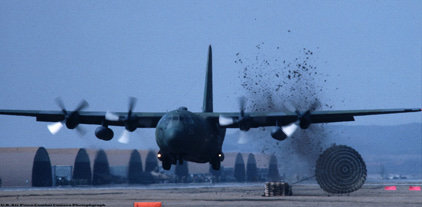
LAPES = Low Altitude Parachute Extraction System
LAPES low altitude- we're talking really low altitude. Passes are made at about 2 to 10 feet off the ground. It's done at high speed too, around 130 knots.
The delivery aircraft must maintain stability and have great controllability. Typically, C-130s and C-17s are used as the delivery aircraft. The pilot must give nose down pitch control as the payload rolls out the back. Once the payload is clear of the aircraft - nose down would fly the aircraft into the ground. The pilot must give nose up control inputs to keep the aircraft level and then climb out after delivery. The margin of error is small since they are flying 2-10 feet off the deck at 130 knots.
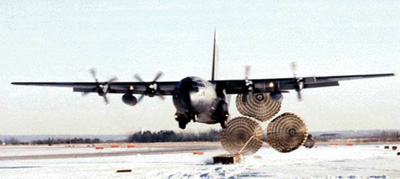
To help the pilots out, the payload is locked in place until there is sufficient drag from the parachutes to pull the payload out very quickly. As the parachutes inflate, the payload remains in place. Then locks release, similar to the way ski bindings release, to allow the payload to make its departure from the aircraft.
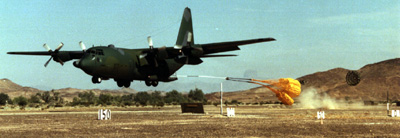
LAPES allows cargo loads to be placed directly on the ground in exactly the right place. Some of these places would not allow for aircraft landings. Sometimes the terrain was unsuitable, sometimes it was because of enemy fire. LAPES was better at spotting heavy loads than Heavy Load Air Delivery.
LAPES Sequence:
Drogue parachute is ejected into the airstream.
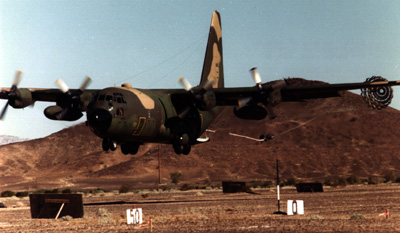
Cluster of Parachutes extracted from deployment bag
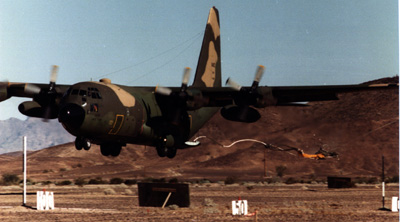
Cluster Parachutes inflating

Payload Moving
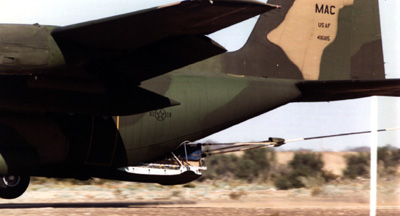
Payload just before tipoff
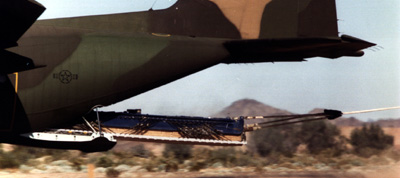
Payload Extraction
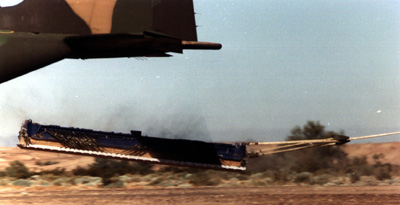
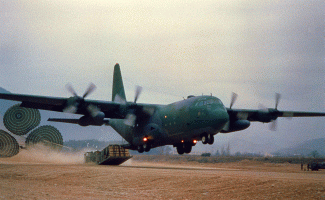
C-130 accomplishes a Low Altitude Parachute Extraction.
 C-17 Globemaster made its first LAPES drop on May 3, 1994.
The first production-category Globemaster III carried a 6,700 pound test load. The aircraft made a pass at 130 knots (about 150
mph) just 2 feet above the south lake bed.
The extraction chute successfully pulled out the cluster of parachutes. The clusters inflated and built up to a drag force of 20,000 pounds. The locks released and the payload extracted quickly and on target.
C-17 Globemaster made its first LAPES drop on May 3, 1994.
The first production-category Globemaster III carried a 6,700 pound test load. The aircraft made a pass at 130 knots (about 150
mph) just 2 feet above the south lake bed.
The extraction chute successfully pulled out the cluster of parachutes. The clusters inflated and built up to a drag force of 20,000 pounds. The locks released and the payload extracted quickly and on target.
[Products] | [Services]
[Join Our Mailing List] | [Advertise on ParachuteHistory.com]
[ ]
[Disclaimer] | [Privacy Policy] | [About]